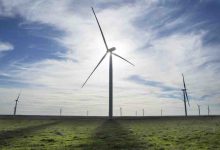This September’s generation figures mark a noticeable turning point for Australia’s National Electricity Market. The major construction boom in renewables is now converting into extra generation that is driving a retreat not just in brown coal, but also finally black coal as well.
The thing that stood out was that we saw Australia’s lowest cost fossil fuel generator Loy Yang A limping along at just a 50% capacity factor for the month due to outages at several of its units, and overall brown coal output was 37% below the amount that prevailed in September, 2016.
Yet black coal did not flood in to fill the breach. Instead, its generation was also down 7% on September 2016 generation levels and almost 9% down on September last year.
Combined black and brown coal generation for this September has now been pushed back down to levels slightly below what prevailed when the carbon price was in place in September 2013.
Renewables on the other hand hit a new record for market share this month of 27.9%, more than a percentage point up on the prior record of 26.6% – achieved last month, and also reached in August last year.
What’s interesting is the record market share in September was achieved even though hydro output was 11% below its September average (measured since 2006 when Tasmania joined the NEM).
Also it wasn’t a particularly noteworthy month for wind. Overall wind generation was 16% below the record of around 1,760 GWh in July this year, with NEM wind farms achieving an average capacity factor of 34.2% (excluding wind farms currently being commissioned). By way of comparison it was 40.2% in July and the all-time record for NEM wind farms stands at 48% (achieved in September of 2017).
Total solar generation, however, did break its prior monthly record, generating around 1500 GWh in September (the prior record was set in January this year).
While September is a low demand month, higher electricity demand in subsequent months won’t provide all that much relief for fossil fuel generators.
The high levels of solar won’t end here, with around 2,800 megawatts of large-scale solar capacity either committed, under construction or being commissioned. And small-scale rooftop solar is on track to exceed 2,000 megawatts of installations for this year (178 megawatts was added in September alone). And of course solar capacity factors will continue to rise as we approach the December solstice.
Then there’s another 4,100 megawatts of wind either under construction or being commissioned.
As all this new capacity comes online with negligible variable operating costs, economics dictates that coal and also gas must make a major retreat and wholesale power prices will fall. For gas such a retreat should be easier due to lower fixed costs and the greater flexibility of their plant.
For coal it will be harder, although black coal plant are far more flexible than many may expect. Origin, EnergyAustralia and AGL have all been beavering away to make their plants more capable of powering down to low levels in the middle of the day, while remaining capable of ramping back up in the late afternoon as solar power subsides.
Yallourn may find things tougher in its old age, low levels of output flexibility, high fixed costs and incredibly high emissions intensity may mean tough decisions are not far away. Yet at the same time it has a major advantage in its very low fuel costs.
You’d be a very brave and potentially a very rich person that predicts exactly when and which coal power station closes after Liddell. Yet the experience of Hazelwood suggests that its best not to ignore the reality that:
1. Thermal-mechanical equipment does eventually wear out;
2. Shareholders in publicly listed companies really aren’t all that attached to highly polluting power stations.
Instead of trying to hold back the tide or ignore it altogether, we actually need to prepare for such changes, because nostalgia is not a strategy.
See also: AEMO provides glimpse of future grid: Not much fossil fuel, even less “base-load”
Tristan Edis, Director – Analysis & Advisory and Sarah Morton, Senior Analyst, Green Energy Markets










